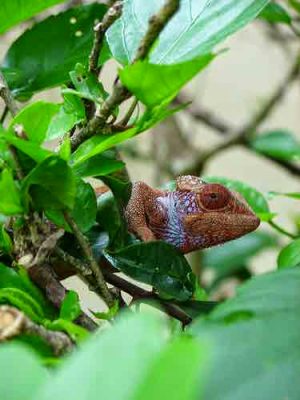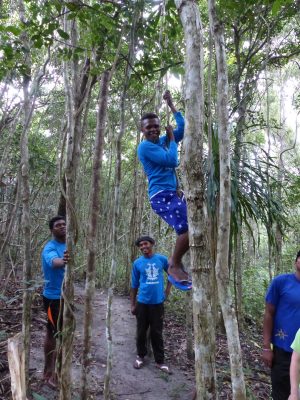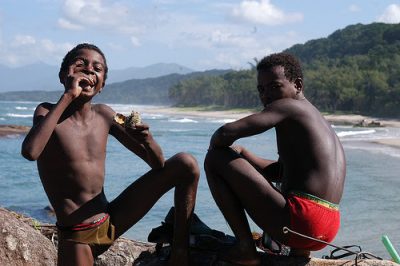
Tell us a little bit about the history of the Sainte Luce Reserve.

Something that I noticed over the years is that many rural communities suffer negative impacts from conservation that are not adequately mitigated by accompanying measures. For example in Sainte Luce, reduced access to the forests since the protected areas were established have led to changes in the natural resources available to the community.
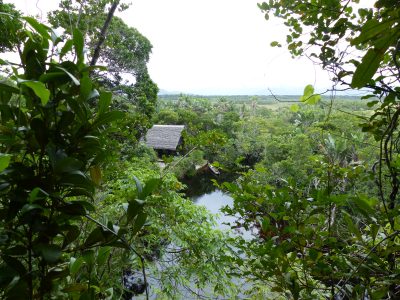
Where is the Sainte Luce Reserve located?

We are so fortunate that we are surrounded by superb white-sand beaches and endless inland waterways, and we are uniquely surrounded by a number of forest types (albeit all of them highly threatened).
We have the littoral forests on the coast, the rainforests in the mountains, the spiny forests just to the south, and, a mixture of all of those forest types in the transitional forests, where species from all of the forest types are found, living together. The transitional forests are the only places, for example, where you can see brown lemurs (rain and littoral forest species) living alongside sifaka and ring-tailed lemurs (from the dry spiny forests)… Madagascar is truly amazing.
And your staff?
Our committee is made up of myself as president, my administrator who I have worked with for 20 years as treasurer, and as advisory members we have a highly experienced woman who is a teacher of teachers and who specialises in gender equality issues, a now-retired former government official, an environmental processes manager (currently working on coral-reef-repair in Tulear) and members of the elders of Sainte Luce community; one is the village chief, and another is the now-retired former forest committee (COBA) president.
 Which lemur species do you work with?
Which lemur species do you work with?
Well I knew you would ask that question and frankly, well, we are not entirely sure, and I don’t think anyone is.
What we do know is that probably our most charismatic lemur is the varika, or collared brown lemur (Eulemur collaris). These are our biggest lemurs, they are cathemeral and start moving through the forest very early in the morning, you have to be up really early to still find them asleep. They are active all morning, then during the heat of the midday they relax and sleep, and then around 2 or 3 in the afternoon they start to move again and often come right into our camp during their afternoon walkabout.
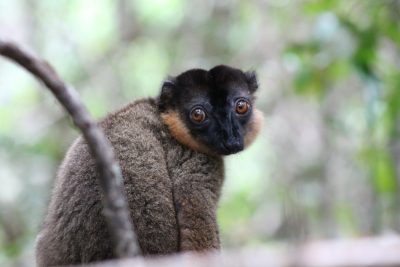
Something about our lemurs that may be unusual… in the other forest fragments of Sainte Luce, the smaller lemurs go into torpor (like hibernation) in the cooler months, but in our forest, they are super-frisky and active all year around, right through the winter. It must be because they live on the beach ;-p
 How does the Sainte Luce Reserve help lemur conservation? What other duties do you have?
How does the Sainte Luce Reserve help lemur conservation? What other duties do you have?
Habitat Protection
Our absolute focus for conservation is habitat protection and allowing nature to do her thing. We have focused on stopping hunting and destruction of the lemur’s habitat, and we have spent all of our effort on restoration and enhancement of the natural environment through ongoing native-tree planting in areas where people had damaged the forest in the past.
None of our animals are caged, collared, fed or captured, but we do engage with the lemurs constantly via daily habituation. It is only seven years ago that the lemurs fled upon sighting humans, so it is very likely that they were still being hunted when we first started to guard the forest, as they were when (now Dr.) Matthew Banks and I first started to look at the collared brown lemurs in the S9 fragment in Sainte Luce back in maybe 1997 or ‘98.
The lemurs in our forest are now more or less entirely habituated to humans. Our aim is for the animals to entirely ignore us when they see us, but probably this will be impossible, they are primates after all, and are incredibly curious, especially since these lemurs have babies every year, so, we constantly have new youngsters who are super curious and come down tentatively looking for a cuddle (lol… which we don’t allow)…
Employment for Locals
Like I said, our technique for engaging local people in conservation is employment. So we have between 5 and 20 local people (plus volunteers) working at our camp at any one time, depending on what is happening. These people work on basic maintenance of the site, as guides & interpreters, as the security agents of the forest, and all are learning about conservation (plant and animal names & identification, etc), and languages, and wider skills training, on-the-job.
Our reserve is an absolute-coastal forest on a 17km-long beach, meaning we also have a vested interest in the coastline, so, we work on a number of issues such as reforestation of the dunes, and, sea turtle conservation. We are working on the issues surrounding illegal sea-turtle hunting and sea-turtle egg collection, and this month our volunteers are preparing a presentation for the school-children on sea turtles, their importance to the environment, and their conservation.
Mangrove Reforestation
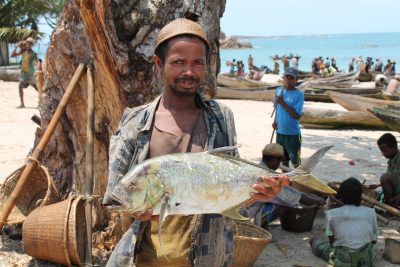
Over the last year, our staff and volunteers have planted over 7,000 mangrove trees around our reach of the river and this work continues. We aim to extend the project to other reaches of the river not within our boundaries as soon as the mangroves start producing propagules again in the warm weather.
What are some of your recent achievements?
The mangrove planting mentioned above is my favourite recent achievement.
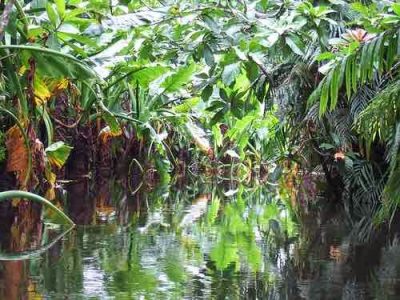
Sainte Luce Reserve is also a palm sanctuary. Dypsis saintelucei is an endemic palm first described here in the Sainte Luce forests, and perhaps only 200 mature individuals remain in the wild. In 2010 we planted 3,000 plants into the reserve to protect this species from extinction. This year, we are concentrating on another critically endangered species, Dypsis brevicaulis.
Of course, we are also very proud of the increase in numbers of the wildlife since we have been protecting the forest. Birds and lemurs are all growing in numbers year by year, and this year we have been seeing even the very cryptic fanaloka (Fossa fossana), an animal normally totally spooked by humans, wandering about the camp even during daylight hours.
What are some goals and expectations you have for the future?
Our goal put simply is to continue to maintain and improve the integrity of this habitat into the future, and make our small reserve a motor generating wider conservation positives into the local area and the region. We want our influence and good habits to be duplicated and we hope that what we do will have positive knock-on effects throughout the other fragments of the Sainte Luce forests.
Over the next two years (and probably forever as we constantly find new things) we are working on compiling a field guide to the littoral forests of Sainte Luce. With regard to the flora, we already have over 100 voucher specimens lodged in PBZT herbarium and about 50% have been identified to species level. This work is ongoing.
We are building a photo library of all the flora and fauna of the forest, from fungi to snails to insects to carnivores, and we aim to produce our field guide as a smartphone application that people can install and use to easily better-understand the littoral forest environment when they visit.
We have a secret goal to expand the size of our reserve, but we can’t talk about that too much at the moment 🙂
We always have a number of projects in incubation…
 Why would someone should volunteer at the Sainte Luce Reserve?
Why would someone should volunteer at the Sainte Luce Reserve?
We think you should choose us because: well first of all, this is one of the most beautiful places you will see in your life… Next, we are not a volunteering organisation, we are a nature reserve that needs volunteers. So, we have no fancy overheads, no overseas offices … we spend your contribution in Madagascar and for conservation. Every cent is spent here on the ground and in the local community, employing local people. We don’t pretend to be anything that we are not – nothing is faked for your entertainment. We don’t create activity just to give you experience or make you feel important. This is real grass-roots habitat conservation in one of the most spectacular beach-front forests. You will have close encounters with wildlife every day. We have over 15 experience welcoming volunteers to Madagascar, and your health and safety are our principal concern.
We have built a lovely little camp on the edge of the rainforest for our volunteers, with private bungalows for sleeping, nice communal sitting houses on the river and on the beach for recreation, shower and proper flush toilet, solar powered lights and charging for phones etc…
Oh and did we say, we have lemurs? On the beach?
What do you need donations for right now?
Gosh!!! Well our total number-one-conservation-fantasy is to buy a boat to guard the forest via the river system. Our main problem in terms of conservation is patrolling the area, and because of our geography, on the opposite side of a river and lake system that is 17 km long, to have a small boat with a quiet electric motor is our number one fantasy. This is a very big ask, but, well, you asked the question 🙂
We always need donations of small items such as torches, phones, tools, and uniforms for the staff. We currently have a fundraiser online or general donations can be made on PayPal to admin@sainte-luce-reserve.org.
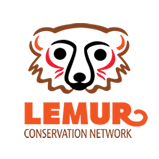
 Which lemur species do you work with?
Which lemur species do you work with?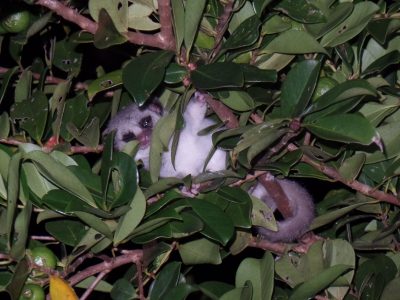 How does the Sainte Luce Reserve help lemur conservation? What other duties do you have?
How does the Sainte Luce Reserve help lemur conservation? What other duties do you have?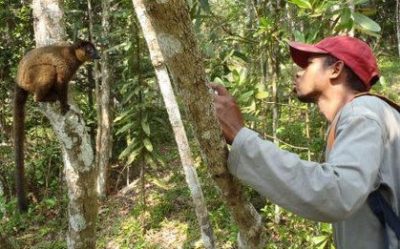
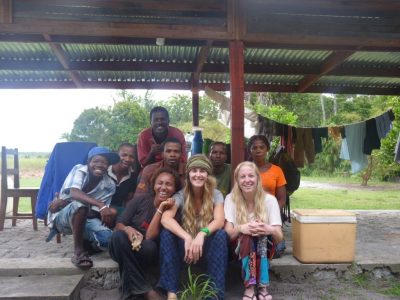 Why would someone should volunteer at the Sainte Luce Reserve?
Why would someone should volunteer at the Sainte Luce Reserve?